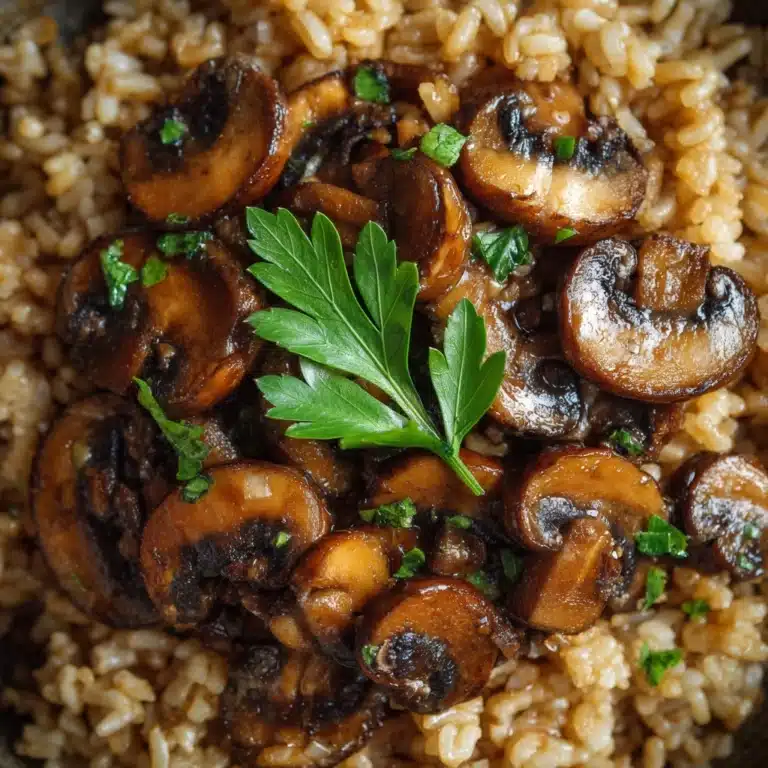Looking for a show-stopping dessert that’s surprisingly easy to make? This Sabayon Recipe is a silky, mousse-like custard that’s as elegant as it is effortless. With just a handful of ingredients and a little whisking magic, you’ll have a classic French treat that dazzles with its creamy lightness and subtle notes of wine. Whether you serve it warm over fresh berries or as a lavish sauce for cake, this is one recipe that transforms even the simplest fruit into a five-star finale.

Ingredients You’ll Need
The beauty of this Sabayon Recipe is how a humble list of ingredients can yield such luxuriously delicious results. Each component adds something special—think a glossy texture and layers of delicate flavor—so don’t skip anything!
- Large Egg Yolks: These create the velvety foundation, giving sabayon its rich, creamy texture.
- Granulated Sugar: Adds just the right amount of sweetness, balancing the wine and eggs without overpowering.
- Dry White Wine or Marsala Wine: Classic Marsala offers a sweet complexity, while dry white wine keeps things bright and elegant—use whatever you love!
- Pinch of Salt: Just a bit enhances all the other flavors and keeps the custard from tasting flat.
- Fresh Berries or Fruit (optional): These turn your sabayon into a colorful, irresistible dessert worthy of a dinner party.
- Mint Leaves (optional): A sprig or two gives a finishing touch of color and a whisper of fresh aroma.
How to Make Sabayon Recipe
Step 1: Whisk Your Sabayon Base
Start by combining your egg yolks, sugar, wine, and a pinch of salt in a large heatproof bowl. Whisk vigorously until the mixture is smooth and pale—this airiness at the beginning means your sabayon will turn out cloudlike and light as a feather. Don’t skimp on this step; it sets the foundation for the entire dessert.
Step 2: Gentle Double Boiler Heating
Set the bowl over a saucepan of gently simmering water, making sure the bottom of the bowl isn’t touching the water. The magic here is using indirect heat so your egg yolks gently thicken, rather than scramble. Keep whisking constantly—it’s a bit of an arm workout, but totally worth it. After about 7 to 10 minutes, the mixture will puff up and thicken. Watch for those soft peaks!
Step 3: Cool and Stabilize
Once your sabayon is glossy and holds its shape, quickly remove it from the heat. Give it a few more whisks off the heat to cool it ever so slightly. This stops the cooking process and helps stabilize the texture, making every spoonful creamy and dreamy from start to finish.
Step 4: Serve Immediately
Sabayon is at its absolute best when served right away, still warm and billowy. Spoon it over a dish of fresh berries or poached fruit, or use it to elevate a simple slice of pound cake or some crisp cookies. Every bite will taste like pure decadence.
How to Serve Sabayon Recipe

Garnishes
The simplest way to finish your sabayon is with plump, ripe berries and a sprinkling of fresh mint leaves. These not only add color and brightness but also enhance the flavor of the custard without overwhelming it. A dusting of powdered sugar or a drizzle of honey can be delightful if you’re feeling fancy.
Side Dishes
Sabayon is heavenly with biscotti, ladyfingers, or any butter-rich cookie for dipping. You can also serve it alongside slices of soft pound cake, sponge cake, or even over roasted stone fruits for extra flair. The contrast between the warm custard and cool fruit is absolutely unbeatable!
Creative Ways to Present
For a special occasion, spoon your sabayon into pretty glass cups or wine glasses, layering with fruit for a trifle effect. Or, torch the top lightly (à la crème brûlée) just before serving for a whisper of caramelized crunch. For a fun brunch treat, serve it with French toast or crepes as a luxurious sauce.
Make Ahead and Storage
Storing Leftovers
If you happen to have leftover sabayon, transfer it to an airtight container and refrigerate. It will keep for about a day, but remember the texture will be a bit firmer when cold. Give it a gentle whisk before serving chilled.
Freezing
This Sabayon Recipe isn’t ideal for freezing, since the delicate custard can separate or develop a grainy texture when thawed. Try to enjoy it fresh, straight from the bowl—you’ll be glad you did.
Reheating
To gently reheat refrigerated sabayon, set the bowl over simmering water and whisk constantly until just warmed through. Be careful not to overheat, as the eggs can quickly overcook and lose their silky quality. A splash of wine can help restore the desired creaminess.
FAQs
Can I make this sabayon recipe without alcohol?
Yes! If you’d rather skip the wine, substitute with white grape juice or sparkling apple cider. You’ll still wind up with a sweet, luscious dessert full of flavor and finesse.
Why did my sabayon turn out grainy or scrambled?
Grainy sabayon usually means the mixture got too hot, causing the eggs to scramble. Keep the heat low, and be sure you’re whisking constantly—the double boiler method helps control the temperature for a silky smooth result.
Can I use a different type Dessert
Absolutely. Marsala is traditional and lends a deeper richness, while dry white wine offers a lighter, fruitier touch. Feel free to experiment with prosecco or even a splash of dessert wine for custom flavors.
Is it okay to make sabayon recipe ahead of time for a dinner party?
You can make it a few hours in advance and serve chilled, though it’s best enjoyed freshly made and warm. If you do make it ahead, store covered in the fridge, and give it a brisk whisk before serving to revive its lightness.
How can I tell when sabayon is finished cooking?
You’re looking for a custard that’s thickened, glossy, and holds soft peaks when you lift the whisk. It should pour in slow ribbons and have a light, airy texture—if you see curds, it went too far!
Final Thoughts
If you’ve never tried making a Sabayon Recipe at home, prepare to amaze yourself (and your guests) with just how effortlessly elegant dessert can be. This French classic is pure creamy indulgence and a true celebration of simple, beautiful flavors. Give it a go, and don’t be surprised when everyone asks for seconds!
Print
Sabayon Recipe
- Total Time: 15 minutes
- Yield: 4 servings 1x
- Diet: Gluten Free, Vegetarian
Description
Indulge in the rich and creamy delight of Sabayon, a classic French dessert sauce made with egg yolks, sugar, and wine. This elegant concoction is perfect for topping fresh berries, poached fruit, or even drizzling over cakes and cookies.
Ingredients
Egg Yolk Mixture:
- 4 large egg yolks
- ¼ cup granulated sugar
- ½ cup dry white wine or Marsala wine
- pinch of salt
For Serving (Optional):
- fresh berries or fruit
- mint leaves (for garnish)
Instructions
- Prepare the Sabayon Mixture: In a large heatproof bowl, whisk together the egg yolks, sugar, wine, and salt until smooth and pale.
- Heat Over Simmering Water: Place the bowl over a saucepan of simmering water (double boiler method) without touching the water.
- Whisk Continuously: Whisk the mixture for 7–10 minutes until it thickens into a light, foamy custard with soft peaks.
- Remove from Heat: Once thickened, remove from heat and continue whisking for a minute to cool slightly.
- Serve: Serve warm over fruit or as a sauce with desserts.
Notes
- Sabayon is best enjoyed warm but can also be served slightly chilled.
- For a non-alcoholic version, use white grape juice or sparkling apple cider instead of wine.
- Prep Time: 5 minutes
- Cook Time: 10 minutes
- Category: Dessert
- Method: Whisking over double boiler
- Cuisine: French
Nutrition
- Serving Size: ¼ cup
- Calories: 180
- Sugar: 14g
- Sodium: 40mg
- Fat: 10g
- Saturated Fat: 3g
- Unsaturated Fat: 7g
- Trans Fat: 0g
- Carbohydrates: 15g
- Fiber: 0g
- Protein: 3g
- Cholesterol: 185mg







